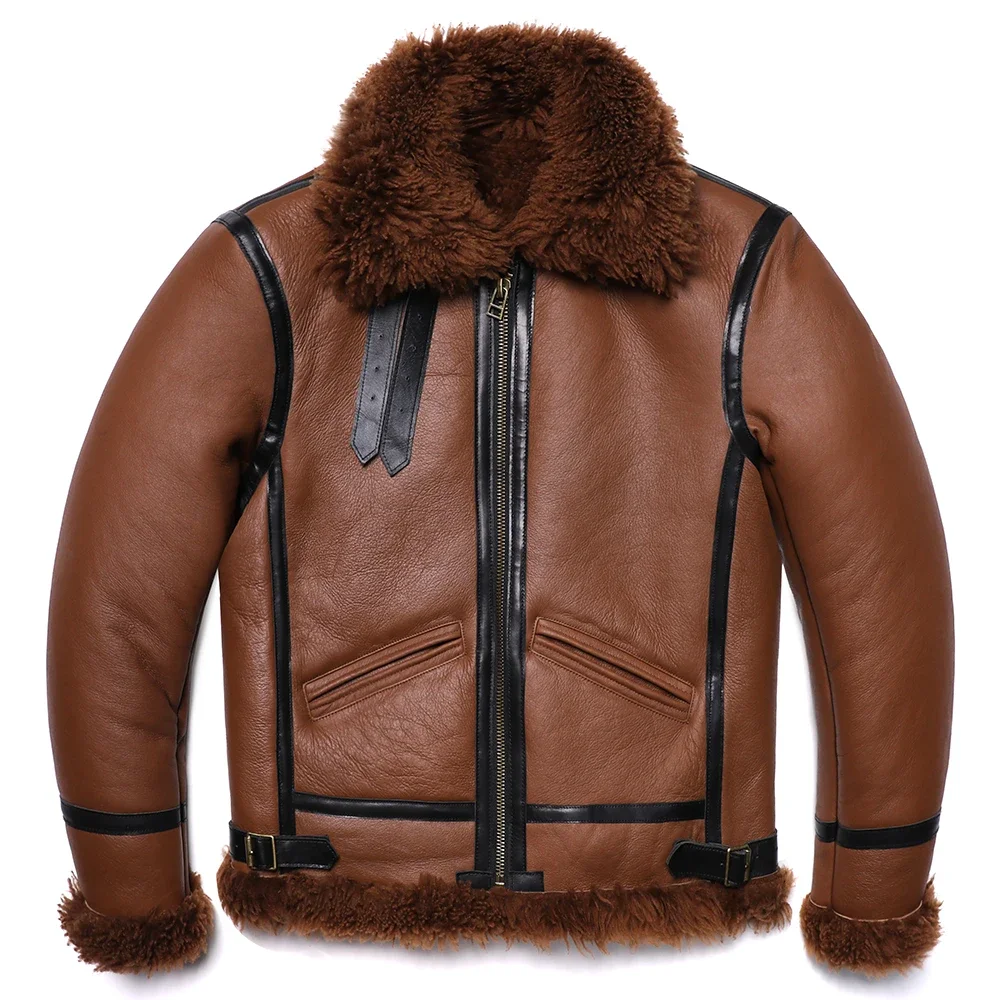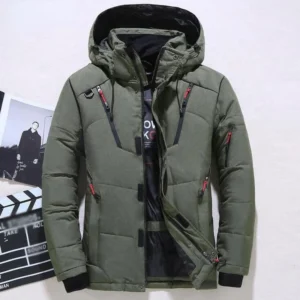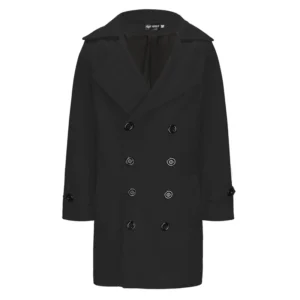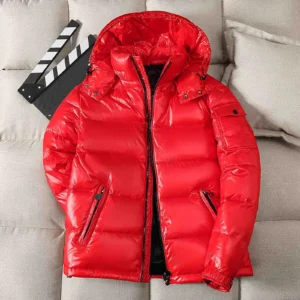Understanding Coat Warmth: Beyond Basic Temperature Ratings
When shopping for a winter coat, many men make the mistake of relying solely on temperature ratings. However, true coat warmth is a complex interplay of multiple factors that work together to create effective insulation. Understanding these elements will help you make a more informed choice for your specific needs.
Warmth perception varies significantly from person to person based on:
- Individual metabolism (naturally “warm-blooded” vs. “cold-blooded” people)
- Typical activity level while wearing the coat
- Humidity levels in your environment
- Wind exposure in your region
- Your personal cold tolerance
The science of thermal insulation in outerwear revolves around creating dead air space to trap body heat. This principle applies whether using natural materials like down and wool or synthetic alternatives. The effectiveness of this insulation depends not just on the material itself but how it’s constructed and maintained.
Throughout this guide, we’ll explore how to evaluate coats based on your specific warmth requirements, considering that the most expensive option isn’t always the most appropriate for your needs. Understanding the fundamental reference for choosing coat length will provide a strong foundation for your selection process.
The Four Essential Elements of a Truly Warm Coat
To truly evaluate a coat’s warmth potential, you need to understand the four critical components that work together to create an effective thermal barrier:
Insulation Type and Quality
This is your primary heat retention mechanism. The type, amount, and quality of insulation directly impact how effectively a coat traps your body heat. From premium down to advanced synthetic fills, each option offers distinct advantages for different conditions.
Shell Material and Weather Resistance
Even the best insulation becomes ineffective when compromised by wind or moisture. A coat’s outer shell provides crucial protection from these elements, maintaining the insulating layer’s performance in challenging conditions.
Construction Methods and Design Features
Technical details like baffle design, seam sealing, and draft-blocking features significantly impact warmth. These elements work together to prevent cold spots and heat leakage through vulnerable areas.
Proper Fit and Coverage
Often overlooked, how a coat fits your body dramatically affects its warmth. Proper coverage of key heat loss areas and adequate room for layering without excess space for cold air circulation makes a substantial difference in performance.
Understanding these elements helps explain why two coats with seemingly similar insulation can perform very differently in cold conditions. The coat length guide for men provides essential insights into how different lengths impact overall warmth and functionality.
Insulation Deep Dive: Understanding Your Options
At its core, insulation works by trapping air in small pockets, creating a barrier that slows heat transfer away from your body. The more effectively an insulation type can maintain these stable air pockets, the warmer you’ll feel.
Three major insulation categories dominate today’s market:
- Down insulation (from duck or goose)
- Synthetic insulation (man-made polyester fibers)
- Wool and other natural fibers
Both the type and quantity of insulation determine a coat’s ultimate warmth. Technical measurements like fill power (for down) and gram weight (for synthetics) help quantify potential warmth, though construction methods significantly impact real-world performance.
Our collection of men’s winter coats showcases various insulation options designed for different temperature ranges and activities.
Down Insulation: Nature’s Premium Warmth Solution
Down insulation consists of the soft, fluffy clusters found beneath the feathers of ducks and geese. These clusters create a three-dimensional structure that traps extraordinary amounts of air relative to their weight.
The quality of down is measured by fill power—a number typically ranging from 550 to 900+. This indicates how many cubic inches one ounce of down will fill under standardized testing. Higher numbers mean:
- Superior loft and insulation
- Better compressibility
- Longer-lasting performance
- Lighter weight for equivalent warmth
Fill weight (the total amount of down) is equally important—a coat with 3 ounces of 800-fill down may be less warm than one with 6 ounces of 650-fill down, despite using lower quality down.
Pros:
– Unmatched warmth-to-weight ratio
– Highly compressible
– Extremely durable when properly cared for
– Natural material with excellent breathability
Cons:
– Loses insulating properties when wet (unless treated)
– Generally more expensive than alternatives
– Requires special cleaning and maintenance
– Ethical concerns (addressed by RDS certification)
Synthetic Insulation: Reliable Performance in All Conditions
Synthetic insulation uses polyester fibers engineered to mimic down’s structure while addressing its weaknesses. These man-made alternatives continue to improve, narrowing the performance gap with premium down.
Common synthetic insulations include:
- PrimaLoft: Known for its soft, down-like feel and excellent water resistance
- Thinsulate: Renowned for high warmth with minimal bulk
- Polartec Thermal Pro: Offers superior breathability for active use
Synthetic insulation is measured by gram weight (60g, 100g, 200g, etc.), indicating the weight of insulation per square meter. Higher numbers mean greater warmth, though construction and design also influence performance.
Pros:
– Maintains warmth when wet
– Typically less expensive than down
– Easier to care for and clean
– Hypoallergenic properties
– Often made from recycled materials
Cons:
– Generally heavier than down for equivalent warmth
– Less compressible
– May break down faster with repeated compression
Alternative Insulations: Wool, Fleece and Hybrid Systems
Beyond down and synthetic fills, several other insulation types offer compelling performance characteristics:
Traditional Wool:
– Natural fiber with excellent moisture management
– Continues insulating when damp
– Natural odor resistance
– Classic appearance for formal coats
Modern Wool Technologies:
– Merino wool offers exceptional softness and temperature regulation
– Boiled wool creates a dense barrier with excellent wind resistance
– Wool blends combine natural benefits with synthetic durability
Fleece:
– Lightweight synthetic warmth
– Quick-drying properties
– Excellent for layering systems
– Highly breathable for active use
Hybrid Insulation:
– Body-mapped warmth zones target insulation where needed most
– Combines multiple insulation types for optimized performance
– Strategically balances warmth, weight and mobility
For classic elegance with natural warmth, explore our wool coats collection featuring premium materials and meticulous construction.
Shell Construction: Your Barrier Against Cold, Wind and Moisture
The shell material forms your coat’s first line of defense against the elements. Even the finest insulation becomes ineffective when compromised by wind or moisture, making shell quality a critical factor in real-world warmth.
Common Shell Materials:
- Nylon: Excellent strength-to-weight ratio, typically more durable and water-resistant than polyester
- Polyester: Good weather resistance, often less expensive, resists UV damage better than nylon
- Cotton: Classic appearance but requires special treatments for weather protection
- Wool: Natural water resistance and windproofing in denser weaves, elegant appearance
Weather Protection Technologies:
Waterproofing vs. Water Resistance: Waterproof membranes (like GORE-TEX) block all water penetration while allowing some moisture vapor to escape. Water-resistant treatments shed light precipitation but eventually saturate.
Windproofing: Achieved through tight weave construction, membranes, or coatings that prevent air penetration. Critical for maintaining insulation efficiency in blustery conditions.
DWR (Durable Water Repellent): A surface treatment that causes water to bead up and roll off. Requires periodic reapplication to maintain effectiveness.
The ideal shell balances weather protection with breathability—excessive sweating inside a coat can actually make you colder than a slightly less water-resistant but more breathable option. Premium coats often use advanced membranes that achieve both objectives.
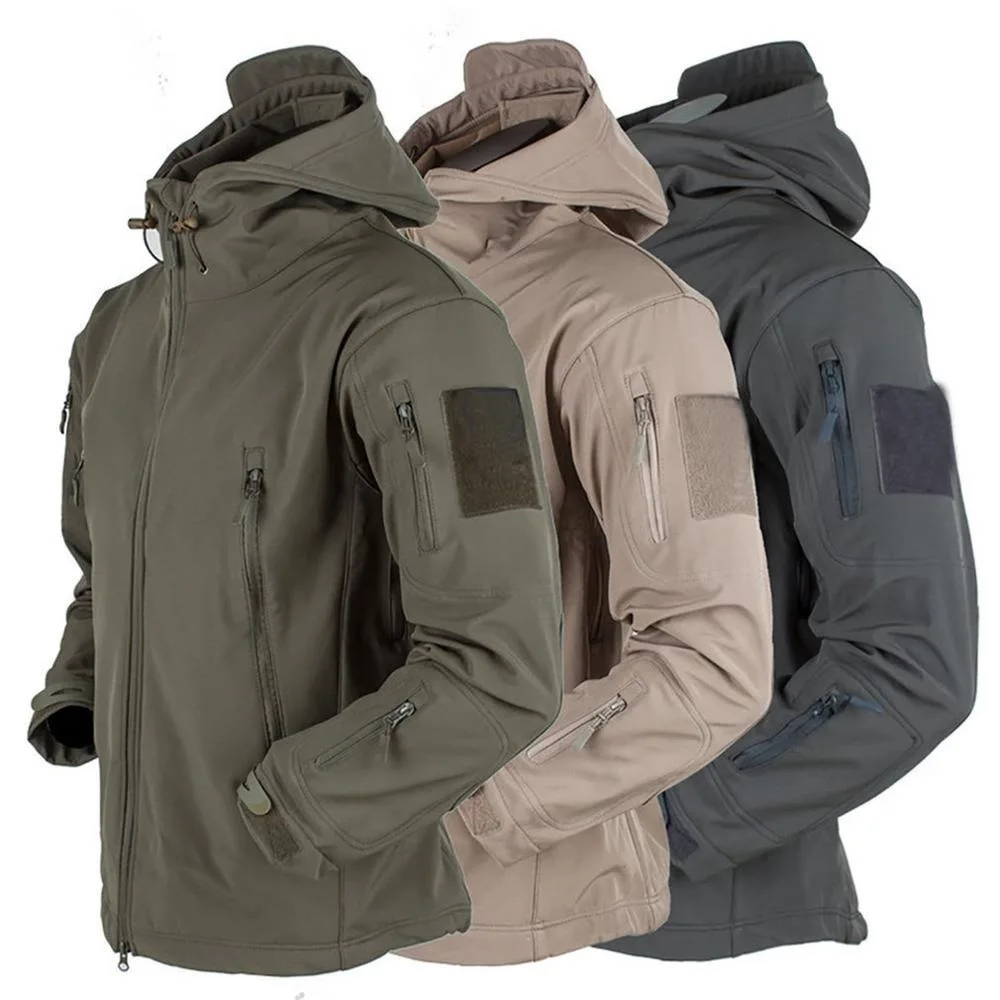
Critical Design Features That Maximize Warmth
Beyond materials, specific design elements dramatically influence a coat’s thermal efficiency:
Hood Design: A well-designed, adjustable hood creates a microclimate around your head and prevents up to 30% of potential body heat loss. Adjustable drawcords and wire-stiffened brims optimize protection without sacrificing visibility.
Collar Construction: High collars with soft, non-abrasive materials protect the vulnerable neck area and create an effective seal against drafts, particularly important when the hood isn’t deployed.
Cuff Systems: Adjustable or elastic cuffs with inner storm cuffs create a critical seal at the wrist, preventing warm air from escaping and cold air from entering through sleeve openings.
Hem Adjustments: Drawcord systems at the hem prevent drafts from entering from below. Drop-tail designs extend coverage for the lower back when moving or sitting.
Zipper Protection: Storm flaps and draft tubes cover zipper tracks—a common source of heat loss and cold penetration. Two-way zippers allow ventilation control without exposing your core.
Baffle Construction: Down coats utilize either sewn-through (quilted) or box construction baffles. Box construction eliminates the cold spots found at seams in sewn-through designs but adds weight and cost.
Strategic Seam Placement: Offsetting seams between layers prevents aligned weak points where cold can penetrate multiple layers simultaneously.
Our collection of hooded winter coats showcases optimized designs that effectively seal out cold air while maintaining comfort and mobility.
Length and Coverage: Finding the Right Balance
Coat length significantly impacts both warmth and functionality. Longer coats provide more coverage and heat retention but may restrict movement, while shorter designs enhance mobility at the cost of some protection.
Hip-Length Coats:
– Ideal for active use and milder conditions
– Provide core warmth while maximizing mobility
– Best for driving, commuting, and higher-activity scenarios
– Lighter weight and less restrictive
Mid-Thigh Length Coats:
– Balanced approach for urban environments
– Extended protection without significant mobility compromise
– Additional coverage for car seats and public transit
– Versatile for most daily winter activities
Knee-Length and Longer Coats:
– Maximum protection for extreme cold or stationary activities
– Comprehensive coverage including upper legs
– Formal overcoats for business attire
– Ideal for extended outdoor exposure in harsh conditions
Your typical activities should guide length selection—a knee-length parka makes sense for watching outdoor sports in winter but would be cumbersome for active commuting. The comparison of short versus long coat designs provides detailed guidance for selecting the optimal length based on your specific needs.
Men’s Coats by Warmth Level: A Practical Guide
The following warmth classification system groups coats into four distinct categories based on their insulation, features, and overall thermal efficiency. These categories provide a framework to match coats with your climate and activity needs.
Remember that temperature ranges are approximate guidelines. Your personal cold sensitivity, activity level, and layering choices will influence which category works best for you in specific conditions. Understanding the detailed information on coat warmth ratings can help you interpret manufacturers’ claims more effectively.
Level 1: Mild Weather Protection (7°C to 15°C / 45°F to 60°F)
Level 1 coats provide light insulation for transitional seasons or milder winter climates. These coats focus on versatility, style, and wind protection rather than extreme warmth.
Key Features:
– Lightweight insulation (thin down, 60g synthetic, or uninsulated wool)
– Wind-resistant shells to block chilling effects
– Streamlined design accommodating layering underneath
– Emphasis on breathability for comfort across temperature fluctuations
Ideal For:
– Fall and spring conditions
– Mild winter climates (Southern regions, Mediterranean climates)
– Active commuting or higher-exertion activities
– Indoor-outdoor transitions with minimal temperature adjustment
Recommended Styles:
– Lightweight wool topcoats
– Quilted jackets with minimal insulation
– Shell jackets with removable liners
The best lightweight coats for mild weather balance protection from light precipitation and wind while preventing overheating during activity.
Level 2: Moderate Cold Protection (-1°C to 7°C / 30°F to 45°F)
Level 2 represents the transition to true winter protection, offering substantive insulation while maintaining everyday practicality.
Key Features:
– Mid-weight insulation (600-650 fill power down, 100g synthetic)
– Enhanced wind resistance with basic water repellency
– More substantial collar and cuff sealing systems
– Strategic coverage of heat loss areas
Ideal For:
– Standard winter conditions in temperate climates
– Daily urban wear with varied activities
– Commuting with moderate outdoor exposure
– Situations requiring balance between protection and mobility
Recommended Styles:
– Classic wool overcoats with modern insulation
– Mid-weight down jackets
– Technical urban parkas with moderate insulation
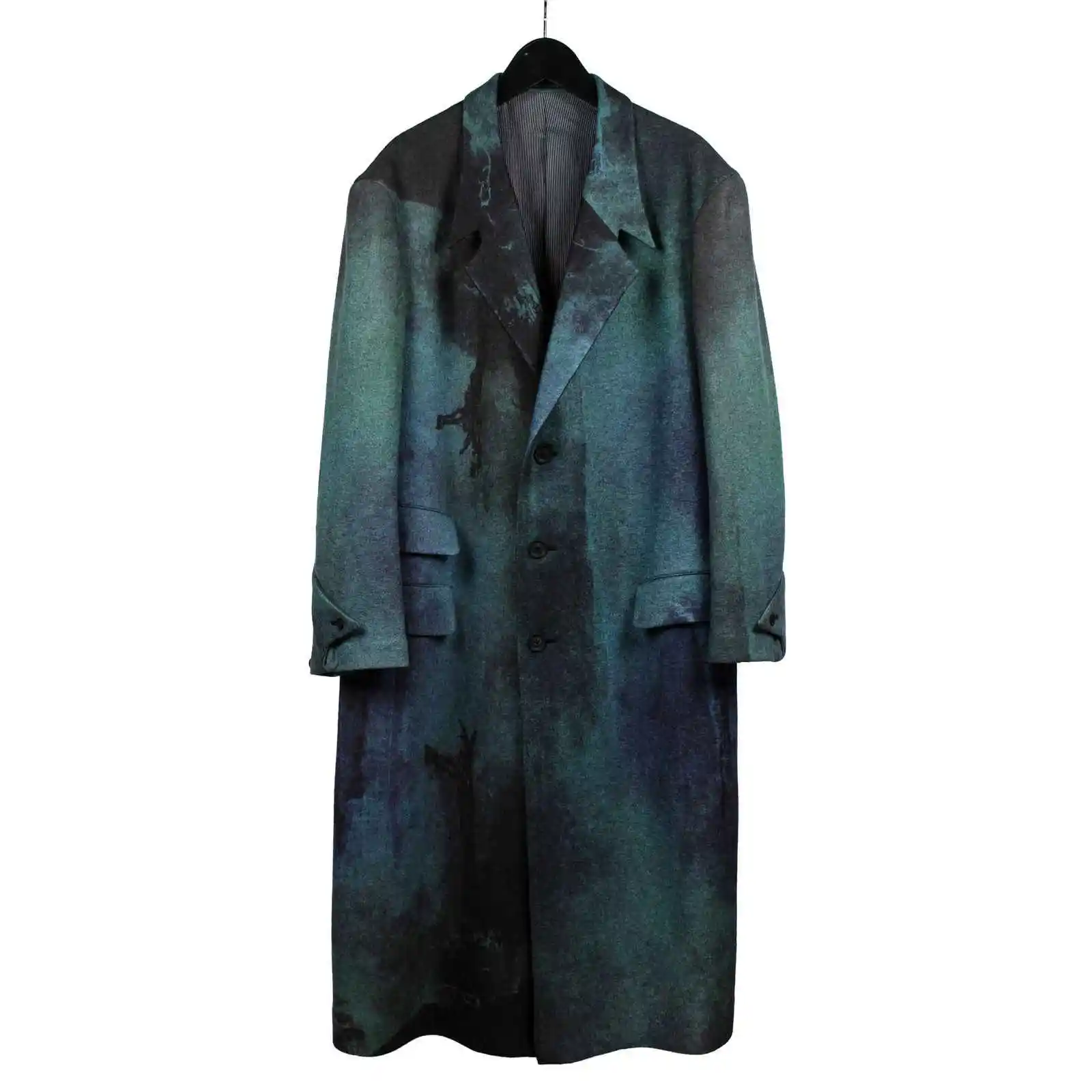
Level 3: Serious Cold Weather Performance (-9°C to -1°C / 15°F to 30°F)
Level 3 coats provide comprehensive winter protection designed for consistent sub-freezing temperatures and challenging conditions.
Key Features:
– Heavy-duty insulation (700+ fill power down, 150-200g synthetic)
– Advanced weather protection systems (waterproofing, not just resistance)
– Fully-developed hood and collar systems
– Extended coverage length for greater protection
– Multiple adjustment points to seal out drafts
Ideal For:
– Northern winter climates with consistent freezing temperatures
– Extended outdoor exposure in cold conditions
– Winter commuting in harsh urban environments
– Less active outdoor winter activities
Recommended Styles:
– Technical parkas with robust insulation
– Performance down coats with weather-resistant shells
– Insulated wool designs with technical enhancements
Our selection of heavy winter coats provides exceptional protection for consistently cold environments without sacrificing style or functionality.
Mens Heavy Winter Coat, Mens Insulated Coat, Mens Parka Coat
Price range: $175.52 through $237.36 Select options This product has multiple variants. The options may be chosen on the product pageMens Big and Tall Winter Coats, Mens Down Coat, Mens Hooded Winter Coat, Mens Puffer Coat
Price range: $126.44 through $217.01 Select options This product has multiple variants. The options may be chosen on the product pageMens Big and Tall Winter Coats, Mens Hooded Winter Coat
Price range: $80.32 through $106.68 Select options This product has multiple variants. The options may be chosen on the product pageMens Double Breasted Pea Coat, Mens Wool Blend Coat, Mens Wool Pea Coat
Price range: $136.84 through $157.36 Select options This product has multiple variants. The options may be chosen on the product pageMens Cashmere Overcoat, Mens Hooded Winter Coat, Mens Wool Blend Coat
Price range: $128.72 through $139.68 Select options This product has multiple variants. The options may be chosen on the product pageMens Hooded Winter Coat, Mens Insulated Coat, Mens Puffer Coat, Mens Quilted Coat
Price range: $139.88 through $177.72 Select options This product has multiple variants. The options may be chosen on the product page
Level 4: Extreme Cold Defense (Below -9°C / Below 15°F)
Level 4 represents specialized cold-weather protection engineered for the most challenging winter environments and prolonged exposure.
Key Features:
– Maximum insulation (800+ fill power down, 200g+ synthetic)
– Expedition-grade weather protection systems
– Specialized features like tunnel hoods, fur/synthetic ruffs
– Multiple sealing systems (inner and outer closures)
– Extended length coverage with reinforced knees and hem
– Technical fabrics prioritizing function over fashion
Ideal For:
– Arctic and sub-arctic conditions
– Mountain environments and high altitudes
– Prolonged outdoor exposure in extreme cold
– Stationary activities in freezing conditions
Recommended Styles:
– Arctic expedition parkas
– High-altitude mountaineering coats
– Technical designs with multi-layer insulation systems
– Premium shearling and fur-lined designs for extreme urban conditions
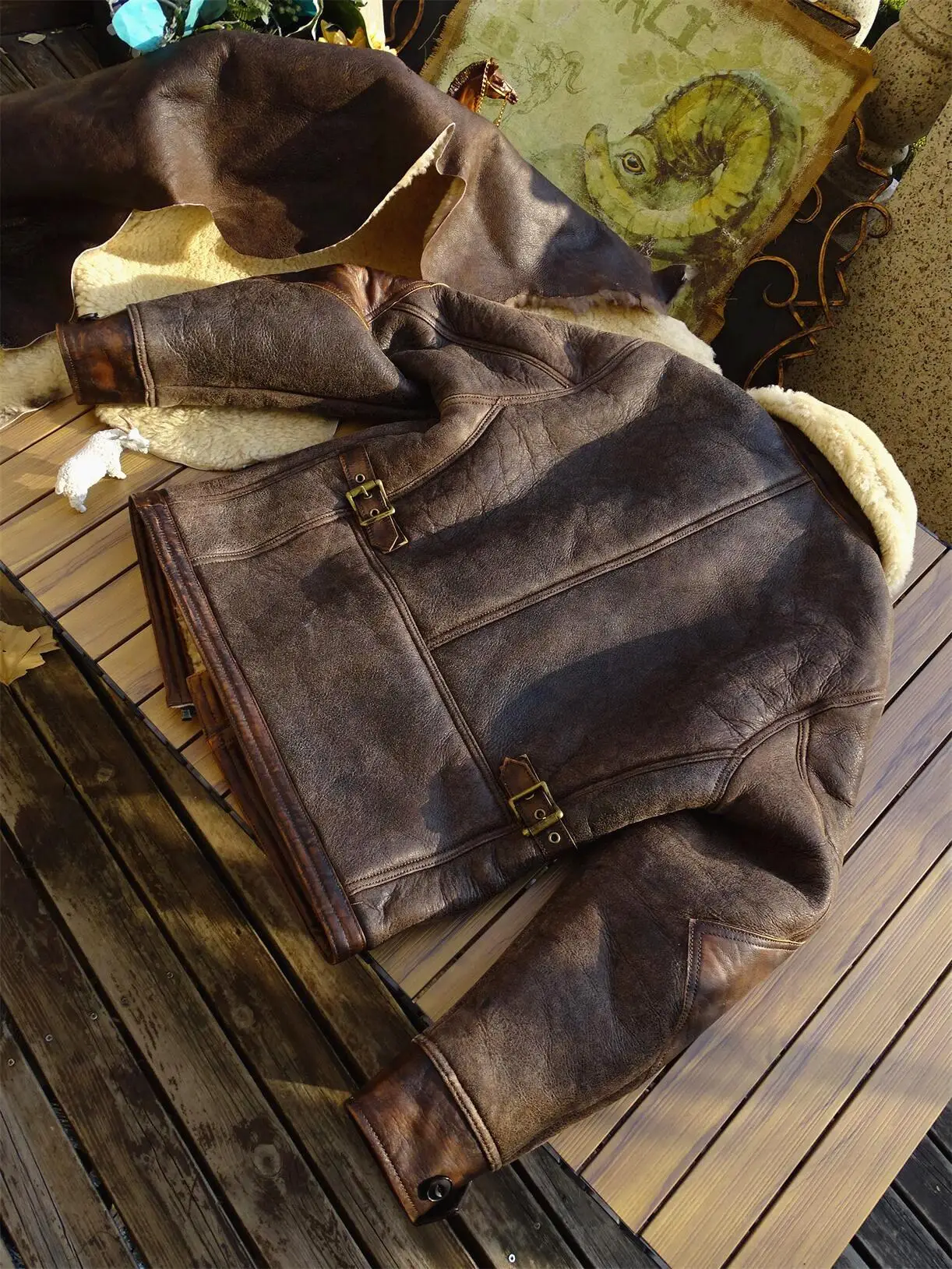
Finding Your Personal Warmth Formula: Assessment Checklist
To determine your ideal warmth level, consider these key factors:
□ Activity Level Assessment
– Low (standing, walking slowly): Choose warmer coats
– Moderate (brisk walking, light activity): Standard warmth rating
– High (running, snow shoveling): Choose lighter insulation to prevent overheating
□ Local Climate Analysis
– Average winter temperatures in your region
– Wind conditions (coastal, urban canyon effects)
– Precipitation type (dry cold vs. wet cold)
– Humidity levels affecting perceived temperature
□ Personal Sensitivity
– Do you typically feel colder or warmer than others?
– Any circulation issues affecting extremities?
– Medication effects on temperature regulation?
□ Layering Strategy
– Will you wear just a shirt underneath or multiple layers?
– Do you prefer a coat that accommodates heavy sweaters?
– Are you using a technical layering system?
□ Style Requirements
– Formal business settings vs. casual environments
– Urban aesthetic vs. technical appearance
– Color and design preferences
Finding the optimal coat length based on warmth needs will ensure you stay comfortable throughout the winter season without compromising on style or functionality.
Extending the Life of Your Premium Coat
Quality winter coats represent a significant investment. Proper care extends their lifespan and maintains optimal warmth performance season after season.
Down Care Essentials:
– Clean only when necessary using specialized down wash products
– Fully dry using low heat and tennis balls to restore loft
– Store uncompressed on broad hangers or laid flat
– Never store damp or dirty
Synthetic Insulation Maintenance:
– Follow manufacturer instructions—some can be machine washed
– Avoid fabric softeners which reduce wicking properties
– Air dry or use low heat settings
– Store without heavy items compressing the insulation
Shell Maintenance:
– Regularly reapply DWR treatments when water stops beading
– Spot clean stains promptly before they set
– Address small tears immediately to prevent insulation leakage
– Follow specific care instructions for technical membranes
Professional Services Worth Considering:
– Specialized cleaning for premium wool coats
– Professional reapplication of DWR treatments
– Zipper repair and replacement
– Patch and insulation repairs for technical garments
With proper care, a premium winter coat should provide effective protection for many years, making it a worthwhile investment in your comfort and style.
Does Higher Price Always Mean More Warmth?
The relationship between price and performance isn’t always straightforward when it comes to winter coats. Understanding where your money goes helps make smarter purchasing decisions.
Where Higher Prices Deliver Real Benefits:
– Insulation quality (higher fill power down, advanced synthetics)
– Weather protection technology (breathable waterproof membranes)
– Construction techniques that eliminate cold spots
– Durability enhancements for long-term performance
– Specialized features for extreme conditions
Where Diminishing Returns Begin:
– Ultra-premium brand markups beyond material improvements
– Fashion-focused designs prioritizing aesthetics over function
– Minimal warmth differences between top-tier technical fabrics
– Features unnecessary for your specific climate needs
The sweet spot often lies in the mid-premium range where quality materials and construction meet reasonable pricing. Metro Cloak focuses on delivering this optimal balance—technical performance and refined style without unnecessary markup.
Can a Winter Coat Be Too Warm?
While underestimating your warmth needs can leave you shivering, overinsulation creates its own problems:
Overheating Risks:
– Excessive sweating reduces insulation effectiveness
– Moisture buildup can actually make you colder once activity stops
– Constant temperature regulation becomes distracting
– Unnecessary weight and bulk limit mobility
Signs Your Coat May Be Too Warm:
– Consistent need to unzip during normal activities
– Feeling clammy or sweaty beneath your layers
– Repeatedly removing and carrying your coat
– Discomfort during indoor-outdoor transitions
The ideal solution is adjustable warmth through strategic ventilation options (pit zips, two-way zippers) and effective layering systems rather than maximum insulation for all conditions.
Choosing Between Waterproof and Water-Resistant Options
The right level of weather protection depends on your local climate and typical activities:
When to Choose Waterproof:
– Regions with frequent wet snow or rain
– Extended outdoor exposure during precipitation
– Activities where getting wet poses safety concerns
– When you can’t easily change or dry out
When Water-Resistance Suffices:
– Primarily dry, cold environments
– Brief outdoor exposure between indoor destinations
– Scenarios where breathability is paramount
– When complemented by umbrellas or other protection
Hybrid Considerations:
– DWR-treated down offers improved performance in damp conditions
– Waterproof/breathable panels in critical areas with more breathable materials elsewhere
– Removable waterproof shells over insulated liners for maximum versatility
Remember that even the most advanced waterproof breathable membranes reduce overall breathability compared to water-resistant options—choose according to your actual needs rather than assuming maximum protection is always best.
By understanding these essential elements of coat warmth and performance, you can make an informed choice that perfectly balances your climate needs, activities, and personal preferences. The right winter coat becomes a trusted companion through the coldest months, providing confidence and comfort in any conditions.

